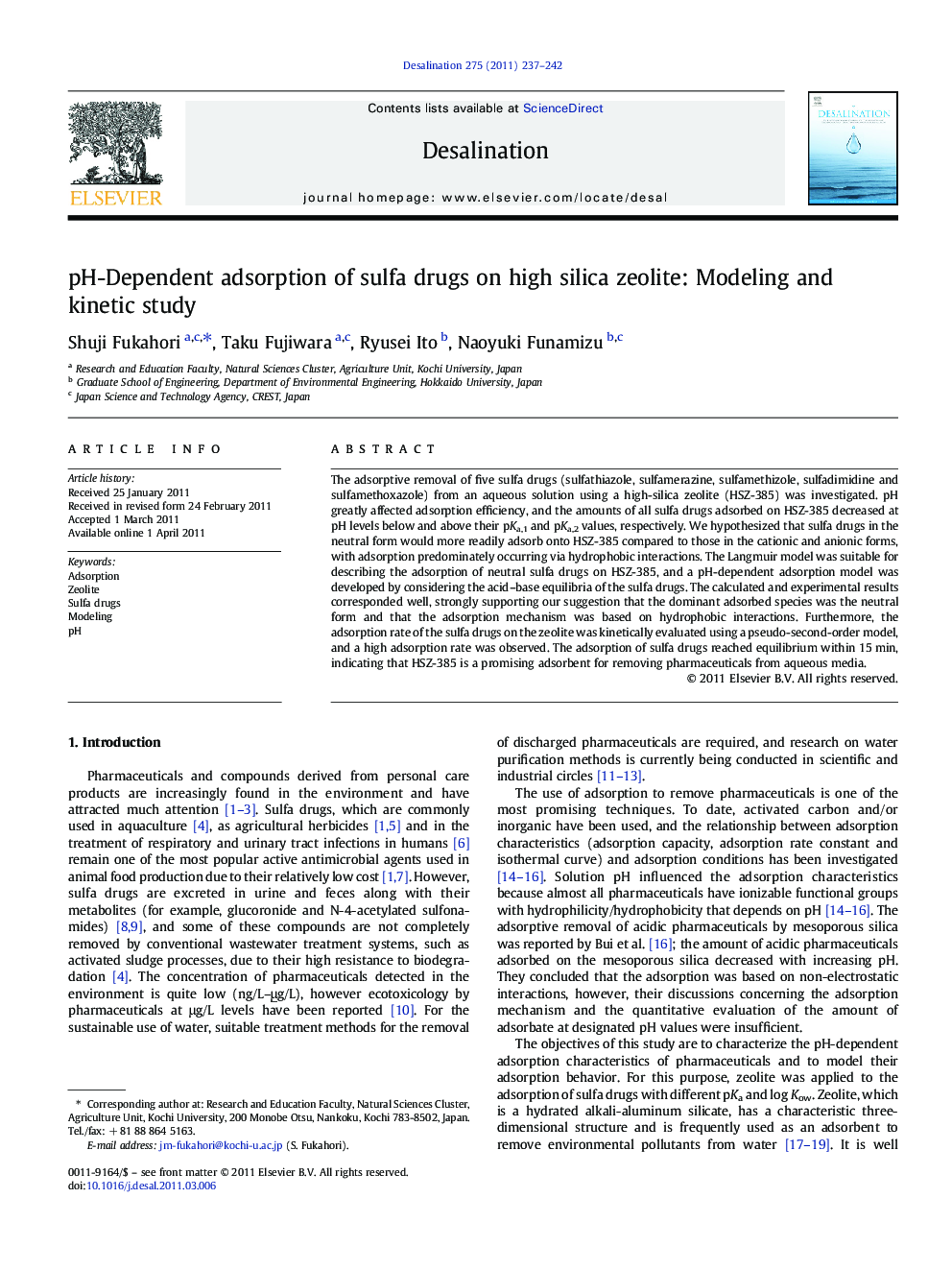| Article ID | Journal | Published Year | Pages | File Type |
|---|---|---|---|---|
| 625088 | Desalination | 2011 | 6 Pages |
The adsorptive removal of five sulfa drugs (sulfathiazole, sulfamerazine, sulfamethizole, sulfadimidine and sulfamethoxazole) from an aqueous solution using a high-silica zeolite (HSZ-385) was investigated. pH greatly affected adsorption efficiency, and the amounts of all sulfa drugs adsorbed on HSZ-385 decreased at pH levels below and above their pKa,1 and pKa,2 values, respectively. We hypothesized that sulfa drugs in the neutral form would more readily adsorb onto HSZ-385 compared to those in the cationic and anionic forms, with adsorption predominately occurring via hydrophobic interactions. The Langmuir model was suitable for describing the adsorption of neutral sulfa drugs on HSZ-385, and a pH-dependent adsorption model was developed by considering the acid–base equilibria of the sulfa drugs. The calculated and experimental results corresponded well, strongly supporting our suggestion that the dominant adsorbed species was the neutral form and that the adsorption mechanism was based on hydrophobic interactions. Furthermore, the adsorption rate of the sulfa drugs on the zeolite was kinetically evaluated using a pseudo-second-order model, and a high adsorption rate was observed. The adsorption of sulfa drugs reached equilibrium within 15 min, indicating that HSZ-385 is a promising adsorbent for removing pharmaceuticals from aqueous media.
Research highlights► Sulfa drugs were strongly adsorbed on high-silica zeolite by hydrophobic interaction. ► The charge of sulfa drugs was important and only neutral sulfa drugs were adsorbed. ► Adsorption rate on the zeolite was faster than that on activated carbon. ► Adsorption model based on Langmuir isotherm and acid–base equilibria was developed. ► Our model enables the estimation of pH-dependent adsorption of pharmaceuticals.
